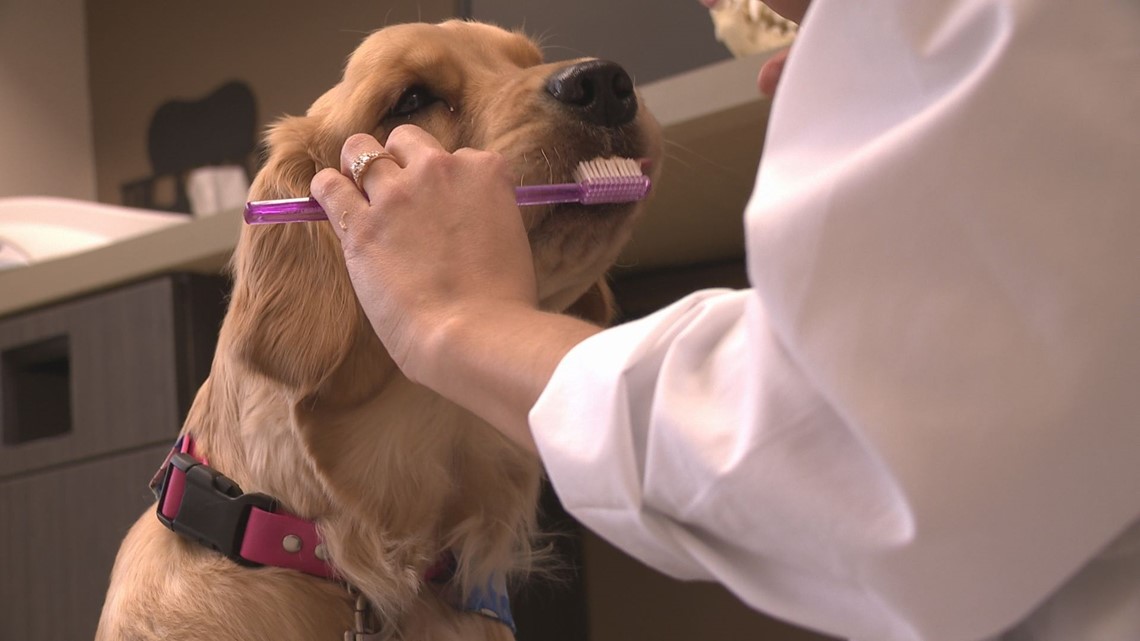- February 2, 2023
- No Comment
- 6 minutes read
How to make sure your pet's teeth are healthy: National Pet Dental Health Month – WKYC.com

Next up in 5
Example video title will go here for this video
WARRENSVILLE HEIGHTS, Ohio — We take our pets to the vet for wellness checks and when they’re feeling under the weather. But are we ignoring an important part of their health?
“Over 70% of pets in the U.S. have periodontal disease by age three years old,” according to Dr. Mallory Kanwal, a Veterinary Dentist and Oral Surgeon at VCA Great Lakes Veterinary Specialists. February is National Pet Dental Health month.
Dr. Kanwal’s message: Overall, pet parents can do a better job when it comes to our fur baby’s oral health.
“Once we notice that bad breath, you know, that doggy breath, we think that’s normal, but it’s not. That bad breath could be the result of gingivitis or periodontitis,” Dr. Kanwal explained.
And without treatment it can lead to much bigger problems.
“We need to figure out how we can stop this cycle of bad breath and inflammation and gingivitis before we’re looking at loose teeth, diseased teeth with bone loss and gum loss that then we need to have a lot of extractions for.”
First: Your veterinarian should be checking your pet’s teeth and gums once a year. They can spot potential trouble.
We want to do our part to prevent problems before they start — and that starts at home.
Dr. Kanwal says brush your pets’ teeth once a day, or every other day. There are brushes made for pets, or you can use a “human” soft bristle toothbrush. Child-sized toothbrushes work great, too!
Do not use toothpaste for humans! Use paste specifically made for pets.
Dr. Kanwal demonstrated what to use on Bellini, a 1-year-old Golden Retriever, who is already a pro.
“This is poultry-flavored toothpaste, a yummy chicken flavor, because we want the toothpaste to be yummy. We want it to be a treat. We want it to be a positive experience. And we don’t want them to have human toothpaste because the fluoride would be dangerous if they swallowed that,” she explained.
It’s great to start on brushing when your pets are young. But it’s never too late to teach an “old dog” or cat new tricks. Just go slow. Let them get comfortable just licking something yummy off a toothbrush. Gradually progress to lifting up their skin to expose their gums. You only need to brush the outside of their teeth, not the inside. Dr. Kanwal said three little swipes with the brush and pet toothpaste on each tooth should do it.
It’s important to make brushing a pleasurable experience, and not a torturous one, so going slow is key — as well as finding something that tastes really yummy to them.
The type of food your pet eats can also play a role! Dry kibble, big enough that they have to chew, provides great enzymatic action on the teeth. Vet-approved dental treats or toys can also dislodge plaque.
As with humans, dental disease can affect overall health — especially the heart, kidneys, liver and joints.
“We want to have a healthy, comfortable, functional mouth for every pet so that then they can eat, they can play, they can give good smelling, kisses and to protect the rest of the body,” Dr. Kanwal said.
In case you are wondering, yes, some breeds are predisposed to gum disease. Dogs have 42 teeth. The smaller the mouth to hold all those teeth, the greater the risk. Smaller breeds like Chihuahua’s, Yorkshire Terriers and Toy Poodles fall into that category.
And short-snout breeds are also more likely to have dental problems. That includes, but is not limited to English Bulldogs, French Bulldogs and Boxer.
Happy brushing!
Editor’s note: Video in the player above was originally published in a previous Ready Pet GO! story on Jan. 25, 2023.
Notifications can be turned off anytime in the browser settings.

